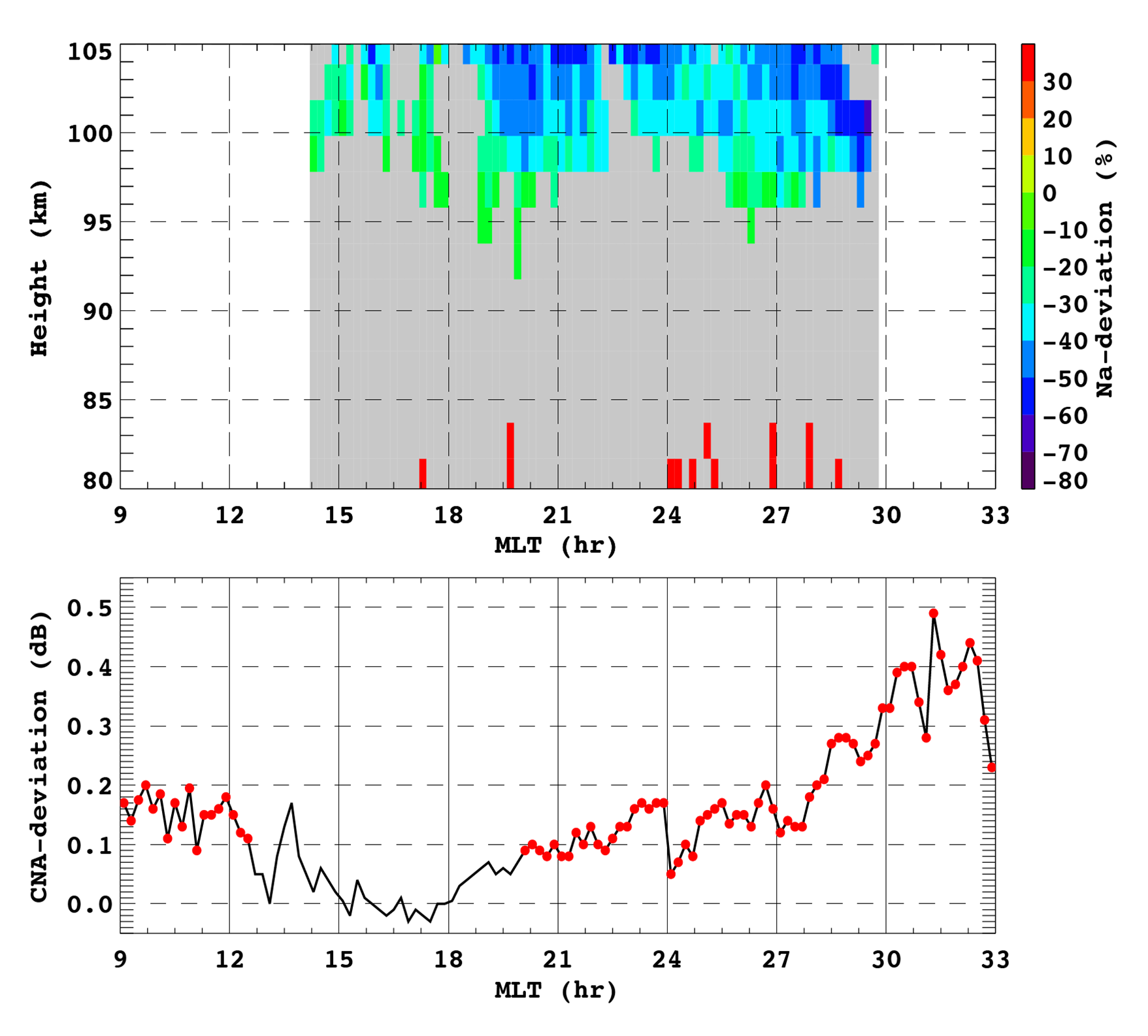|
|
|||||||||||||||||||||||||||||||||||||||
  |
|||||||||||||||||||||||||||||||||||||||
|
Paper Published: 2021/2/9 EPP effetcs on Na in the Earth's upper atmosphereT. T. Tsuda (The University of Electro-Communications)
Relationship between Na layer and CNA variations observed at Syowa, Antarctic Metallic species, which ablate from meteoroids, exist in the Earth's upper atmosphere. One of the major metals is the sodium (Na) which distributes normally at 80-110 km heights. This height range corresponds to the mesosphere and lower thermosphere as well as the ionospheric D and E regions. In the polar region, energetic particle precipitation (EPP), which is the main cause of aurora, from the magnetosphere can often penetrate into the E region and even into the D region. Thus, EPP effects on Na in the upper atmosphere is of interest regarding changes in atmospheric species accompanied by auroral activity. In this work, we have performed a statistical investigation on EPP-induced Na variation, based on the comprehensive ground-based observation at Syowa, Antarctic (69.0ºS, 39.6ºE). The obtained results indicate that EPP induce Na loss around the topside of Na layer, and its effect would be more severe in dawn hours.  The Na density tends to decrease in accordance with cosmic noise absorption (CNA) enhancement, indicating EPP effects. |
|||||||||||||||||||||||||||||||||||||||
|
